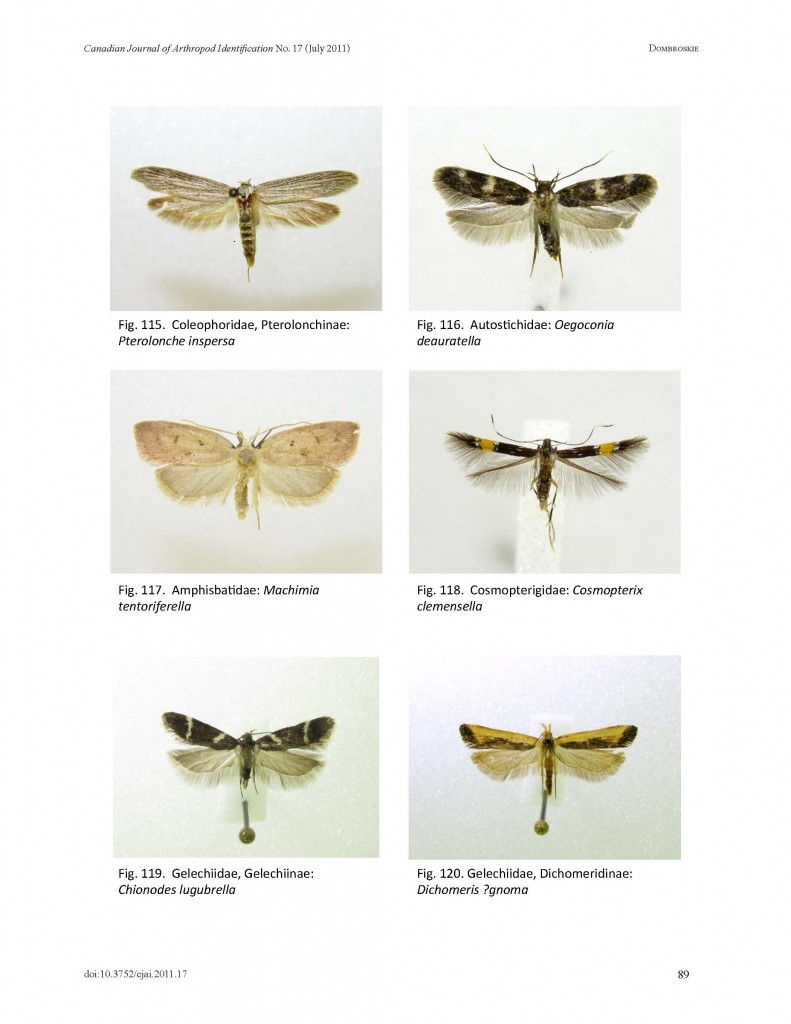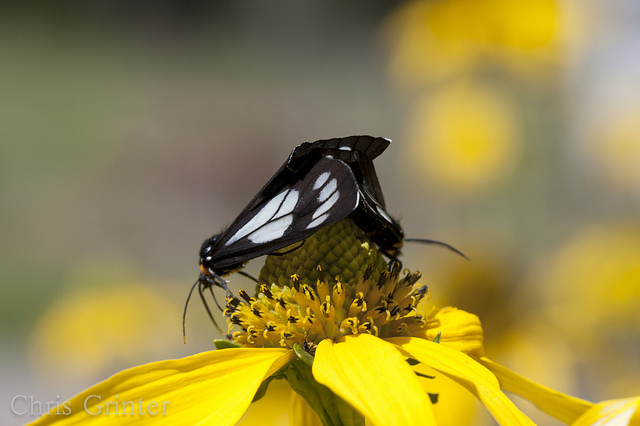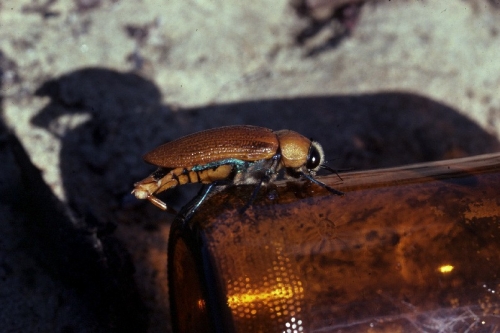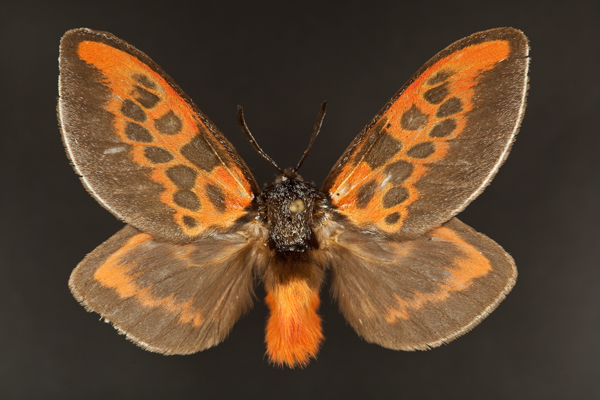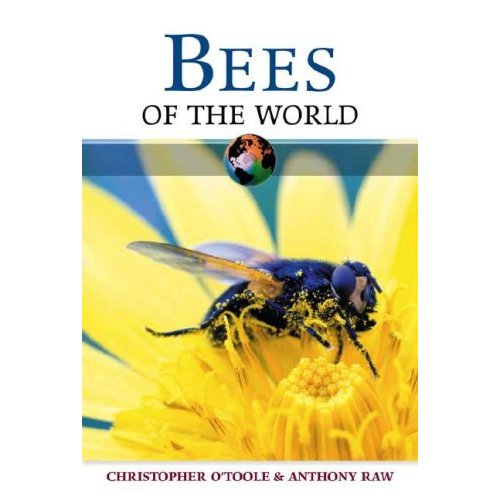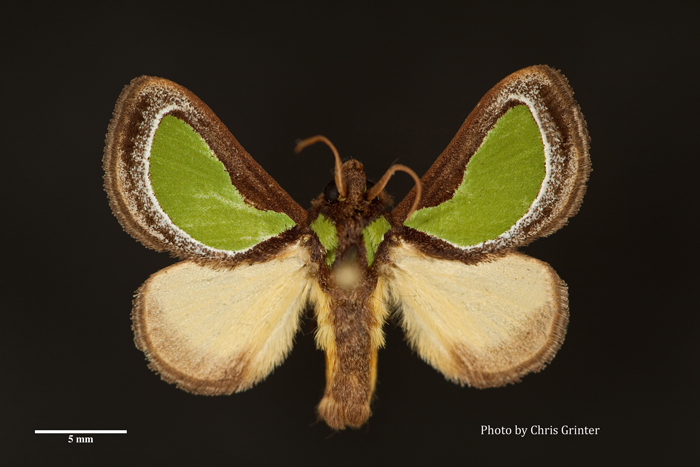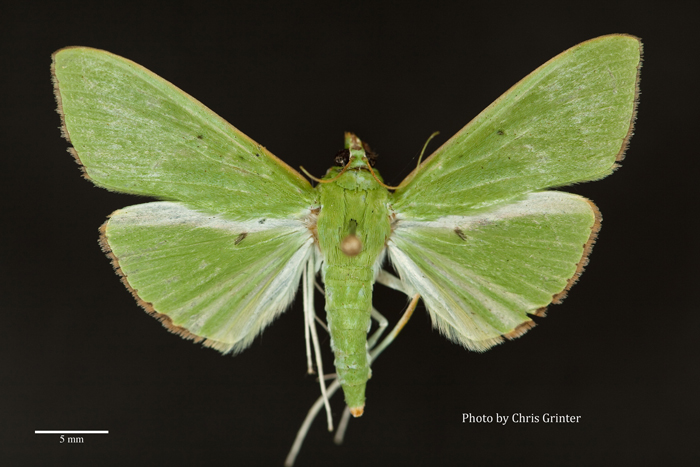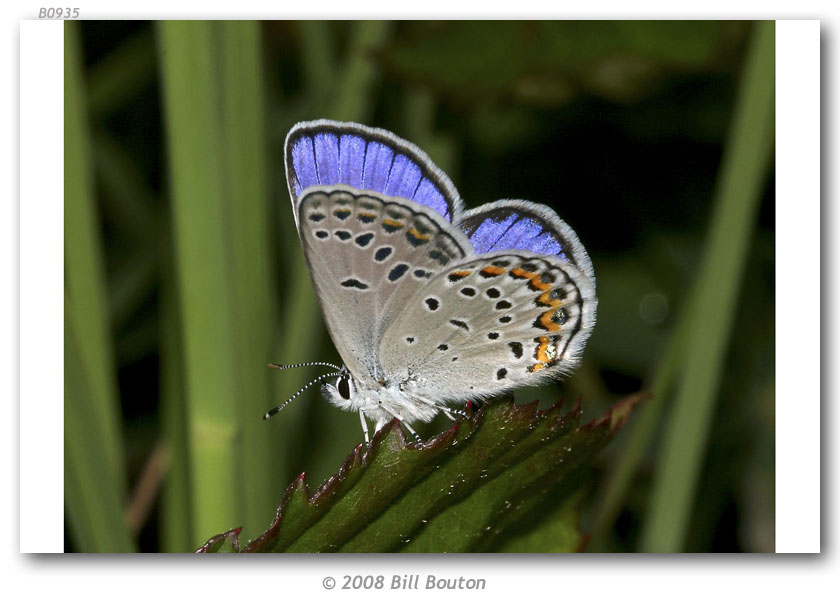Vor ein paar Monaten eine großartige Schlüssel zu den Lepidoptera von Kanada (alle von ihnen) wurde herausgegeben von Jason Dombroskie – ein Doktorand der U. von Alberta. Das Programm ist nur für Windows-Benutzer verfügbar, daher hatte ich noch keine gute Gelegenheit, es zu erkunden – aber das PDF ist online verfügbar und deckt das gleiche Material ab. Alle bekannten kanadischen Schmetterlinge sind in diesem Schlüssel enthalten und die meisten von ihnen bis auf Unterfamilien oder sogar Stämme! Es gibt 222 Taxa, 73 Zeichen und 266 Charakterzustände, die helfen, die Dinge einzugrenzen. Dies ist die erste Referenz dieser Art, die die Fauna eines ganzen Landes genau und vollständig abdeckt, und die erste, die einen gut illustrierten und interaktiven Schlüssel verwendet. Es ist überraschend, wie bekannt die Leps sind, aber wie wenige gute Referenzen existieren, fast keiner davon hat einen verwendbaren Schlüssel. Für alle da draußen, die zuvor Schwierigkeiten hatten, Leps zu identifizieren, wird dies eine unglaublich hilfreiche Ressource sein. Zugegeben, Es gibt wahrscheinlich ein paar US-Motten, die einen Schraubenschlüssel in den Fluss der Dinge werfen könnten, aber im Großen und Ganzen bezweifle ich, dass es viele Probleme geben wird.
|
This Monday moth is an Arctiinae, Gnophaela vermiculata. These beautiful day flying moths were abundant on yellow Helianthus flowers around 9000′ in the Santa Fe National Forest, New Mexico. Caterpillars feed on bluebells, but the adults prefer the highest quality nectar source in the area – which fortunately makes for easy and attractive photo subjects. Today marks a sad day in Physics history, die Tevatron accelerator at Fermi Lab in Batavia Illinois was powered down for the last time. Once the second most powerful accelerator in the world (and most powerful in the USA), the new LHC has made this beautiful machine obsolete. I can only assume the teams of scientists working at Fermi were hopeful for further funding, but the grand ol’ days of big-budget physics was crushed by congress in 1993 with the cancelation of the SSC. Off to Europe our physicists go! I have many fond memories of visiting Fermi with my grade school science class. Every year Mr. House would take us to explore the physics and nature surrounding the lab. I recall a feeling of privilege when you visited a real working lab where there were no public displays with cute goggly-eyed atoms, just chalk boards full of Feynman diagrams and 3 day old cups of coffee. But it was probably the fully restored big bluestem prairie that grew on and around the 4 mile collider ring was where I had the most fun and is what left a lasting impact on my scientific career. And so it goes, the evolution of science in the US. I have noticed this particular trend: 1) An active science facility with lots of research has a tiny museum for public tours. 2) The research loses funding and the tiny museum takes over. 3) The museum is renovated to be more “family” friendly and “interactive”, while science is pushed into the basements. 4) Whatever scientists are left (or students hired to act like scientists) are put under glass for the public to watch like strange creatures; all while true research fades into memory. Die 2011 Ig Nobel ceremony took place yesterday at Harvard’s Sanders Theatre. The award is sponsored by Improbable Research, an organization that gathers fascinating, odd, and outright hilarious research papers that triumph the idea that not all science is boring. Among this year’s distinguished recipients was fellow entomologist and blogger David Rentz, who received the IgNobel in Biology for a discovery made in 1983 with colleague Darryl Gwynne in the Australian outback. Much to their surprise a certain style of brown bottle with indentations at the base (“stubbies”) proved to be irresistible to males of the Buprestid beetle
Congratulations Dave and Darryl!
[youtube kZyIN23Cy4Y 480 360] The microscopic insect world is a very different one from ours and we rarely are given glimpses into it. Thanks in part to the impressive Phantom camera system and the Flight Artists project researchers have filmed the minute (1Millimeter!) Trichogramma wasp (Chalcidoidea) in flight. These insects are egg parasites of Lepidoptera (amongst other groups undoubtedly) and can be used as effective biocontrol agents. As you’ll see in the video it’s been long understood that these wasps hitchhike on adult Lepidoptera waiting for fresh eggs, but it wasn’t know how they got there and if they were even flying onto the adult hosts. Stunningly, this wasp flaps its wings at ~350 times per second to achieve some astounding feats of movement. The biomechanics of this wing mechanism must be fascinating. Scroll ahead to 1:07 and watch the interaction of the two wasps – the one that flips off to the left of the screen moves in such a bizarre way it looks like bad CGI. I sure hope they record more species of minute flying insects!
This Monday moth is a stunning female of the Neotropical Megalopygidae – Trosia nigrorufa. Ed Ross and Ev Schlinger collected this specimen in Peru in 1955, and I’ve heard many stories about these epic expeditions. I can’t really imagine travelling via cargo ship, being gone for six or more months at a time and relying mostly on hand written correspondance. It must have made the world feel like a much larger place than it is today. This is a pretty epic fail. I guess the “young adult” publishing guidelines are less strict with “facts”.
Thanks to Richard Lee Brown for first posting this on Facebook.
Wir alle sahen an diesem Tag kommen, der Anstieg der Schmetterlinge, Tag sie Rache an uns nehmen. Nicht mehr werden sie passiv um ihren Lebensräumen zu fliegen, wie sie für Zentren Bulldozern und verschmutzte mit Abfluss. Ein besonders verärgerter Karner Blue hat sich gemeldet ein Brief an die Zwiebel warnt uns, dass unsere Zeit ungefähr abgelaufen ist. Gefährdete kleine Lycaenidae werden sich an den Händen halten und in einer ruhigen Nacht hinter uns her sein, während wir in unseren Betten schlafen. Wir bei den Lepidopteristen’ Die Gesellschaft hat sogar ihre Liste für das Versäumnis erstellt, Maßnahmen zu ergreifen. Gemeinsam sollten wir handeln, bevor es zu spät ist – Lassen Sie uns vor dem Aufstieg des Blues präventiv zuschlagen. Rette deine Familien! Verbrenne diese Styroporbehälter, die Wiesen pflastern, Fahren Sie Ihre Geländewagen und stellen Sie sich gegen diese flatternden Fanatiker! (oder wir könnten einfach Rette sie…) There has been a continuing discussion over the last few years of why so few women remain in science. While I’m not going to dive into that topic here, you can find great discussions hier, hier, hier und hier. I don’t however think anyone argues about why women don’t enter science in the first place, especially when you see things like this. Way to print that soul crushing stereotype right on the front of your daughters shirt, JCPenny. (über Skepchick) |
Skepsis |
